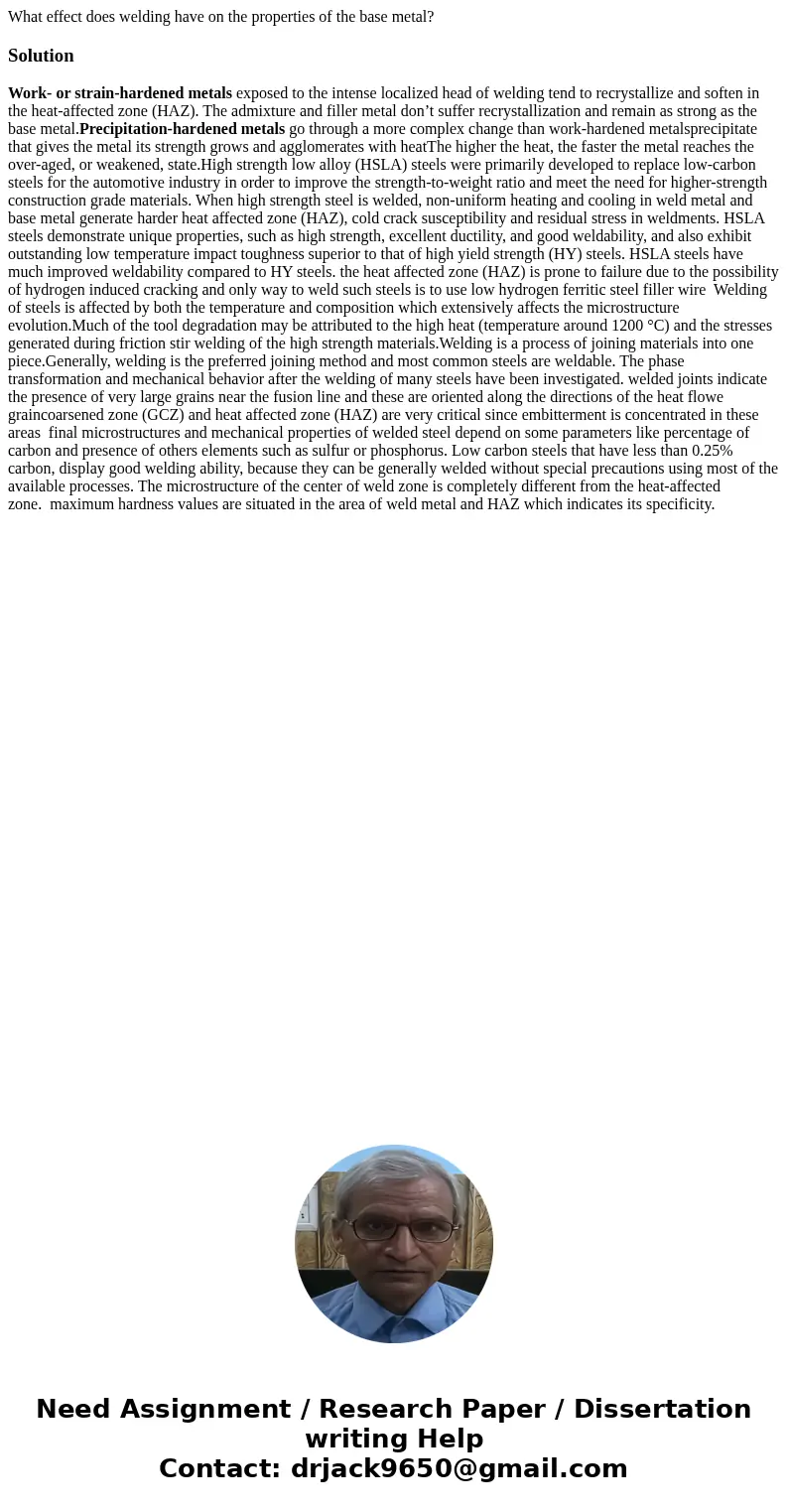What effect does welding have on the properties of the base
What effect does welding have on the properties of the base metal?
Solution
Work- or strain-hardened metals exposed to the intense localized head of welding tend to recrystallize and soften in the heat-affected zone (HAZ). The admixture and filler metal don’t suffer recrystallization and remain as strong as the base metal.Precipitation-hardened metals go through a more complex change than work-hardened metalsprecipitate that gives the metal its strength grows and agglomerates with heatThe higher the heat, the faster the metal reaches the over-aged, or weakened, state.High strength low alloy (HSLA) steels were primarily developed to replace low-carbon steels for the automotive industry in order to improve the strength-to-weight ratio and meet the need for higher-strength construction grade materials. When high strength steel is welded, non-uniform heating and cooling in weld metal and base metal generate harder heat affected zone (HAZ), cold crack susceptibility and residual stress in weldments. HSLA steels demonstrate unique properties, such as high strength, excellent ductility, and good weldability, and also exhibit outstanding low temperature impact toughness superior to that of high yield strength (HY) steels. HSLA steels have much improved weldability compared to HY steels. the heat affected zone (HAZ) is prone to failure due to the possibility of hydrogen induced cracking and only way to weld such steels is to use low hydrogen ferritic steel filler wire Welding of steels is affected by both the temperature and composition which extensively affects the microstructure evolution.Much of the tool degradation may be attributed to the high heat (temperature around 1200 °C) and the stresses generated during friction stir welding of the high strength materials.Welding is a process of joining materials into one piece.Generally, welding is the preferred joining method and most common steels are weldable. The phase transformation and mechanical behavior after the welding of many steels have been investigated. welded joints indicate the presence of very large grains near the fusion line and these are oriented along the directions of the heat flowe graincoarsened zone (GCZ) and heat affected zone (HAZ) are very critical since embitterment is concentrated in these areas final microstructures and mechanical properties of welded steel depend on some parameters like percentage of carbon and presence of others elements such as sulfur or phosphorus. Low carbon steels that have less than 0.25% carbon, display good welding ability, because they can be generally welded without special precautions using most of the available processes. The microstructure of the center of weld zone is completely different from the heat-affected zone. maximum hardness values are situated in the area of weld metal and HAZ which indicates its specificity.

 Homework Sourse
Homework Sourse